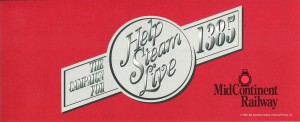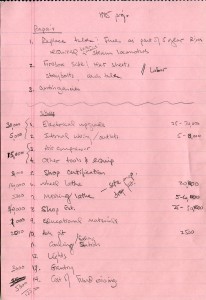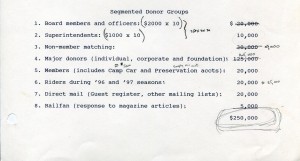When you are a guy and wish to or need to appear clean shaven, you spend a lot of time peering into a mirror while scrapping your face clean of any telltale bristle. It is during these times of self-inflicted facial abrasions that you see the physical flaws you cannot wipe away. The reflection confronting you in the mirror is harsh and unrelenting in its appraisal of the blemishes, which cannot be cured by the anemic virtues of any over the counter remedy. Reflections without mirrors, however, are far more malleable and therefore far less cruel in presenting us with blush free images.
I have spent a lot of time lately reflecting on the past, my past, with a bent towards the loneliness caused by absences, when loved ones leave home or leave life behind permanently. But the past has its own healing purposes as well and the reflections without mirrors that I am inclined to favor now show me images that are easily embraced for their reassuring pathos.
For as long as I can remember I have loved music and enjoyed singing. When I was a child my mother would merely say “Sing us a song” and I would launch right in to whatever song came to mind. It pleased her most when I sang a hymn, but not so much if I belted out a tune from a popular television commercial such as “What’ll you have? Pabst Blue Ribbon” or “You’re lucky if you live in America. Luck, Lucky Lager beer.” But while I was a passable singer in those days, I was absolutely not a musician.
I envied people who could play a musical instrument. I tried to play a few during my childhood; piano, saxophone and guitar. But I lacked the patience to practice and gave up on all three. Being outside was my heart’s desire and growing up in Southern California made being outside an alluring prospect year round.
It wasn’t until I was in college and met the girl I would one day marry that I determined to finally learn how to play the guitar. This was out of a simple but compelling notion that if the girl of my dreams could play, then I could too. Competition had been the basis of my existence all those years of outdoor activity, such as playing baseball with my friends. And now it served me well in my new commitment to play the guitar as well as my sweetheart did.
My technique for learning to strum basic chords was simple. I bought a book which showed the finger position for each chord and figured out that going from E major to E minor was about as simple a chord progression as one could make. It only requires the movement of your left index finger to make the change; press down for the major and lift for the minor. So I worked at that until the chords sounded clearly, which meant that my fingertips had calloused sufficiently to keep the tone from being dull. Then I worked at going from E minor to A minor, a step up in difficulty but still manageable. And then I added D major, D minor and A. All of these required the use of only three fingers, but once I was proficient at playing them I added C, G and F to incorporate the use of all four fingers, while my thumbed curved over the next of the guitar to press down the bass string. My ultimate attainment was being able to strum B minor 7 without fail.
During the first year of our marriage a good friend would come to our apartment on weekends and the three of us would play guitars and sing the popular songs we knew that made use of three part harmonies. Songs by Peter, Paul and Mary were favorites and easy to reproduce since we had the right gender combination. Then we added two songs by Crosby, Stills and Nash to our repertoire; Teach Your Children and Helplessly Hoping. At some point during that year we were joined by a friend from my wife’s college days, who lent his guitar playing rather than his vocal skills to our low-cost, living room floor show.
Both Du and Max were far more accomplished on the guitar than I was. They didn’t just strum chords, they picked when they played, which was a talent I sought to develop. And once again my methodology was to start simple by copying a style that was used by Leonard Cohen on many of his early songs that had what I would call a percussion-like feel to the fingering. But as I progressed and developed a picking style that was only slightly more sophisticated the sound I was hearing influenced the melodies I was able to conceive while indulging in that other fantasy of mine, being a singer-songwriter. One of those early compositions was entitled Where’s Jennie?
The origin of the lyric was inspired by the movie musical Camelot, which I thought was one of my wife’s favorites. That impression was based on her comment that she cried whenever she saw it. In the movie King Arthur’s pet name for Queen Guinevere was Jennie. So being young and in love I thought it quite romantic to occasionally call my wife Jennie as a way to show my affection for her and to acknowledge her passion for this particular musical.
Other allusions, which made it into the lyric, were based on things that happened or that we talked about during the early days of our marriage. My wife had and still has a propensity for going places and doing things without letting me know the when, where and why of her absence. She did and still does have a need for naps and she was typically the first of us to go to bed as I was the night owl of the family. So the thought that she might be sleeping also made it into the song.
Anyone who knows my wife knows that she cries easily. You will find a reference to that aspect of her character being used here. And my personal aspiration to someday own a wooden house as a symbol of our financial success is another element of the song, as is the fact that music was an important part of our life together. It was always with regret that those singalong sessions with friends came to an end. And you will find that sentiment mentioned here as well.
I compressed all of those elements together to form a lament that has remained a favorite of mine to this day. The irony is that it wasn’t until years later that I found out that my wife hated the movie Camelot because it was so depressing. So I was likely very clueless about the impact my calling her Jennie had on our relationship. But we’re still together. And I still enjoy singing this song when I am in the mood for a little homespun sentimentality.
Where’s Jennie?
Where has my Jennie gone?
I’ve looked for her all day long.
Can’t find her. Can’t find her.
There when the music died
I knew in the way she sighed
to wonder. Can’t find her.
The wishing is here to try
to see her again.
Maybe she thought I lied
and maybe I made her cry.
I wonder. I wonder.
I must have lost my sight.
The changes came overnight.
No wonder, can’t find her.
This old wooden house has lost
the comfort she gave to it.
The wishing is here to try
to see her again.
Maybe she’s sleeping.
Maybe she’s sleeping.
I hope she is fast asleep
in dreams of me.



